Collecting the Ecosystems of Science
A dispatch from PITTCON by our curator of instruments and artifacts.
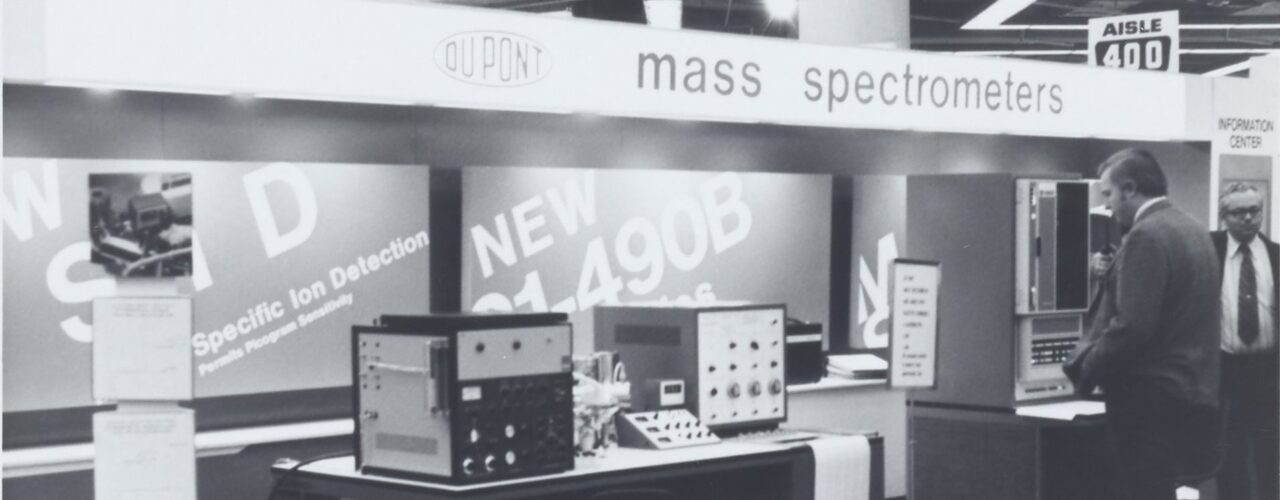
A dispatch from PITTCON by our curator of instruments and artifacts.
“They were all competing for attention,” Dennis Eberl wrote after surveying companies in the exhibit hall at PITTCON in 1973. “Some got it with girls in hot pants passing out literature,” Eberl—an employee of the Bendix instrument manufacturer—continued, “and others by having billboard-like displays with brightly lighted panels.”
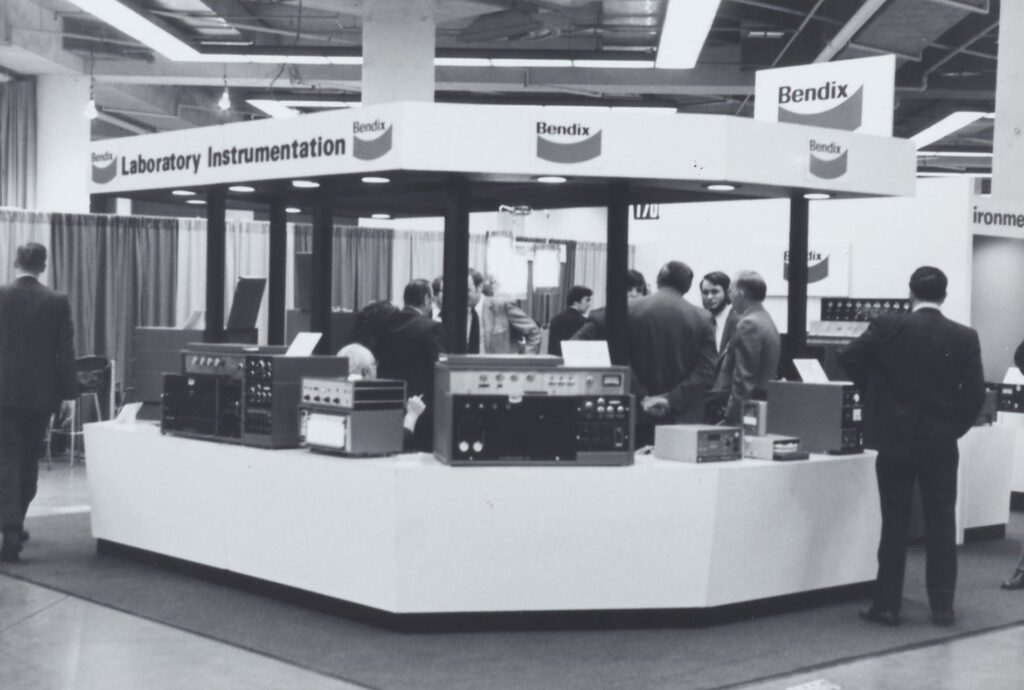
PITTCON is the Pittsburgh Conference on Analytical Chemistry and Applied Spectroscopy. It started in 1950 as an event where Pittsburgh’s numerous industrial chemists could learn from each other. But it became the world’s largest annual trade show in analytical chemistry and instrumentation thanks to the sponsorship of companies that exhibit their latest products. After outgrowing Pittsburgh in the early 1970s, PITTCON now rotates amongst U.S. cities with vast exhibit halls.
Fifty years after Eberl reflected on the 1973 exhibit, PITTCON’s exhibitors still compete for attention, though hopefully in less sexist ways. As the Institute’s curator of instruments and artifacts, I was at the 2023 PITTCON in Philadelphia to meet people with instruments to donate and to identify intriguing things to add to our museum collection.
Looking across the Pennsylvania Convention Center at the 2023 PITTCON was a bit like gazing at the savannah. Through a welter of movement, you can glimpse a complex ecosystem. PITTCON’s exhibit hall reveals the ecosystem of chemistry.
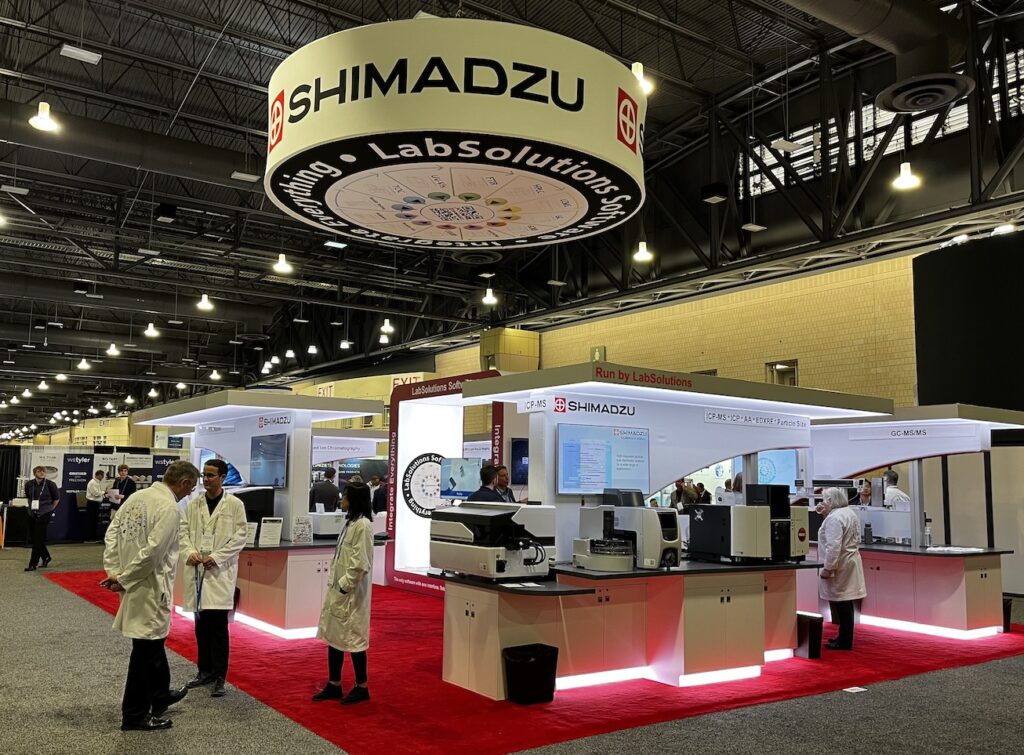
Chemistry’s charismatic megafauna are the big instrument makers. Companies like Shimadzu and Waters Corporation mark out central chunks of the hall to hunt for million-dollar sales, luring visitors with lounging areas and coffee bars and big signs hanging from the ceiling.
More specialized tool makers occupy less expansive niches. Cannon Instrument Company helps chemists manage sticky situations by offering to meet “all your viscosity testing needs.” The ends of less prominent aisles feature swirling potions and magnetically agitated mixers looking like self-stirring cauldrons from Harry Potter.
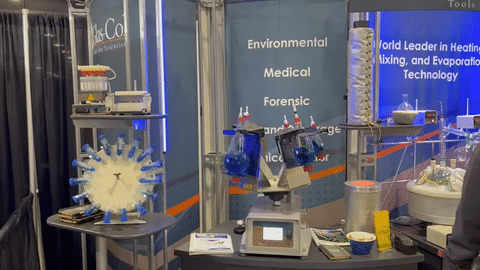
Between rows you find buzzing swarms where companies like PipetteTips.com sell the tiny, numerous consumables that feed every ecosystem.
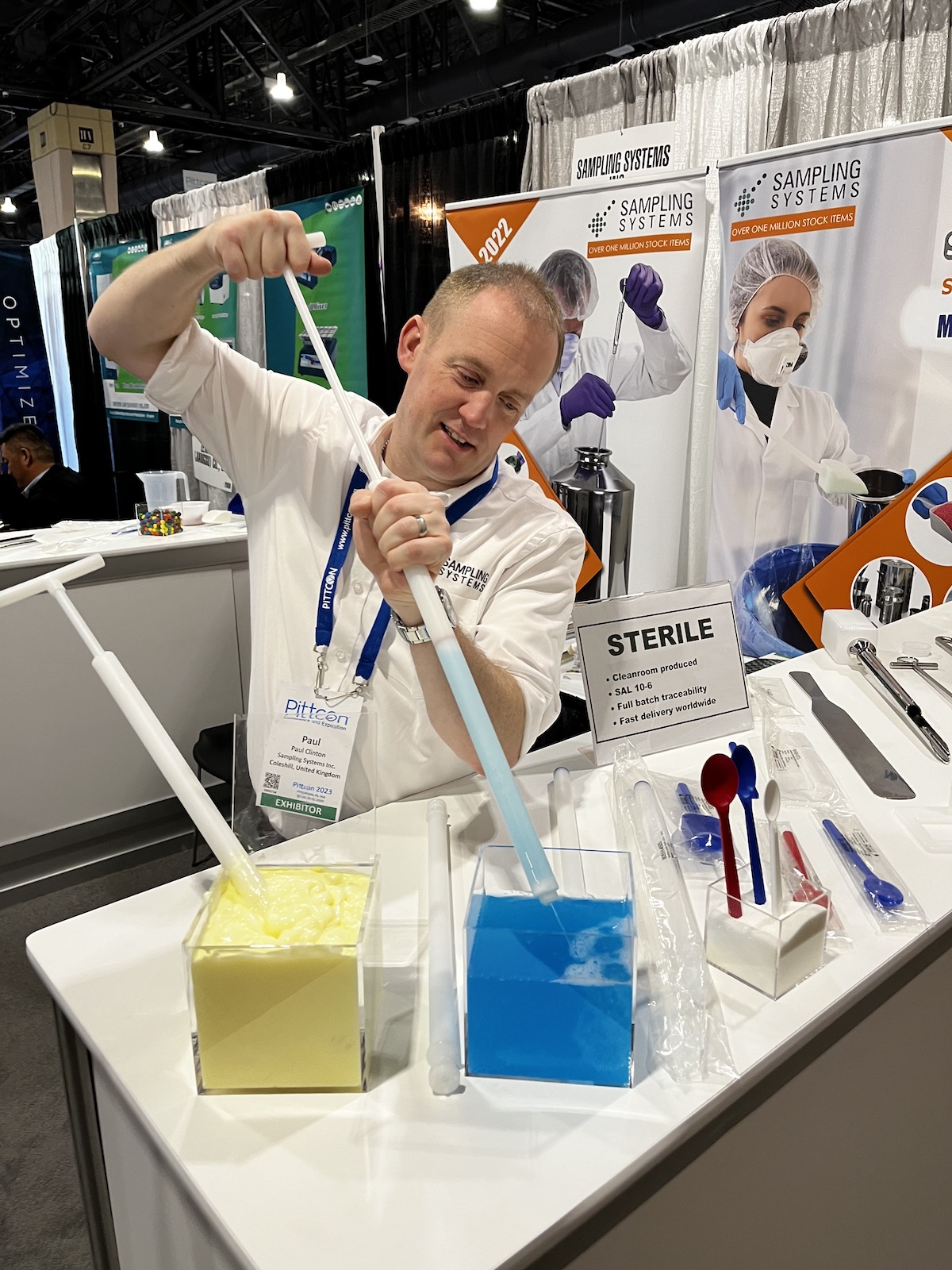
A representative for Sampling Systems Ltd. showed me his spoons and then sucked up a vivid blue liquid to demonstrate extractors for quality testing.
PITTCON also includes small companies like RT Instruments. These firms refurbish used instruments and provide servicing and consumables for instruments used long after the industry’s lions would prefer chemists had upgraded.
A pleasant chat at the booth revealed their representative was a fun guy, and hey, every ecosystem needs organisms that recover nutrients.
At the base of the chemistry ecosystem are companies making the infrastructure of laboratories. Counter Reaction touted its bench tops and sinks that hold up amidst the inevitable spills and slops of lab work. Arctiko builds deep freezers for preserving biological samples. Movex makes octopus-like extractor fans to suck away toxic fumes.
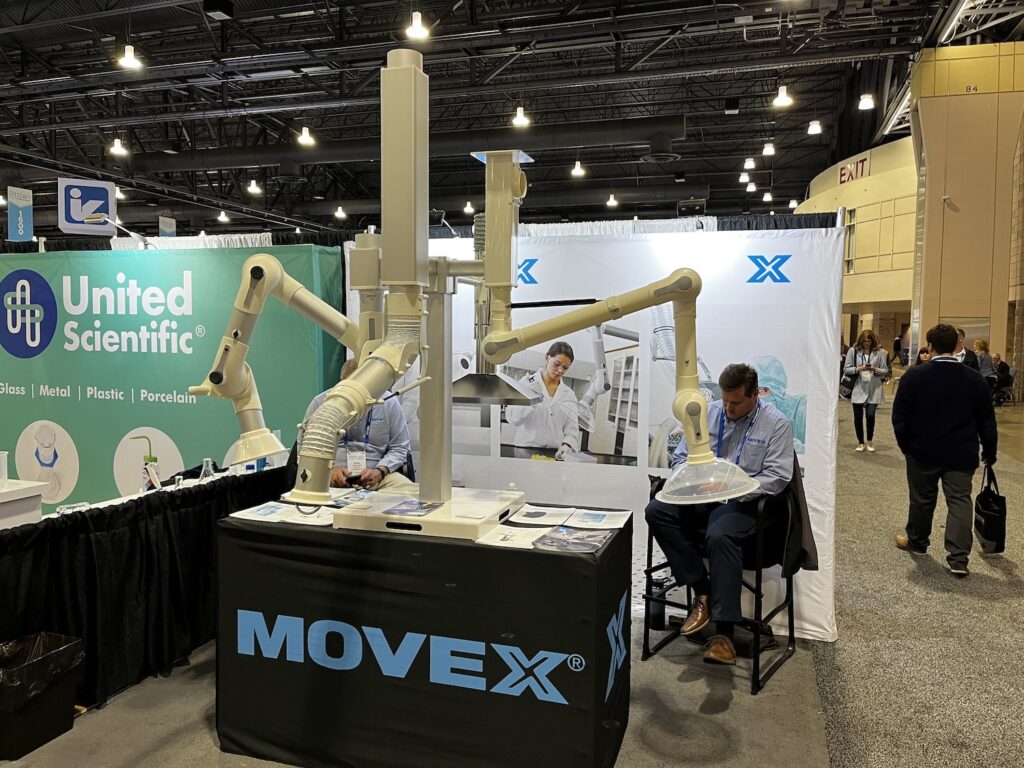
Many natural history museums are stuffed with the taxidermied bodies of megafauna, a legacy of colonialist hunting expeditions. The Science History Institute’s collections similarly emphasize the bodies of historically significant analytical instruments. We have fewer of the accessories, consumables, and infrastructures that made vital the ecosystems those instruments inhabited.
This bias can distort our ideas about where innovation occurs and who is innovative. In The Shock of the Old, historian of technology David Edgerton cautions that our assumption of innovation as endemic to the high-tech blinds us to the significance of innovation in pervasive but less expensive objects.
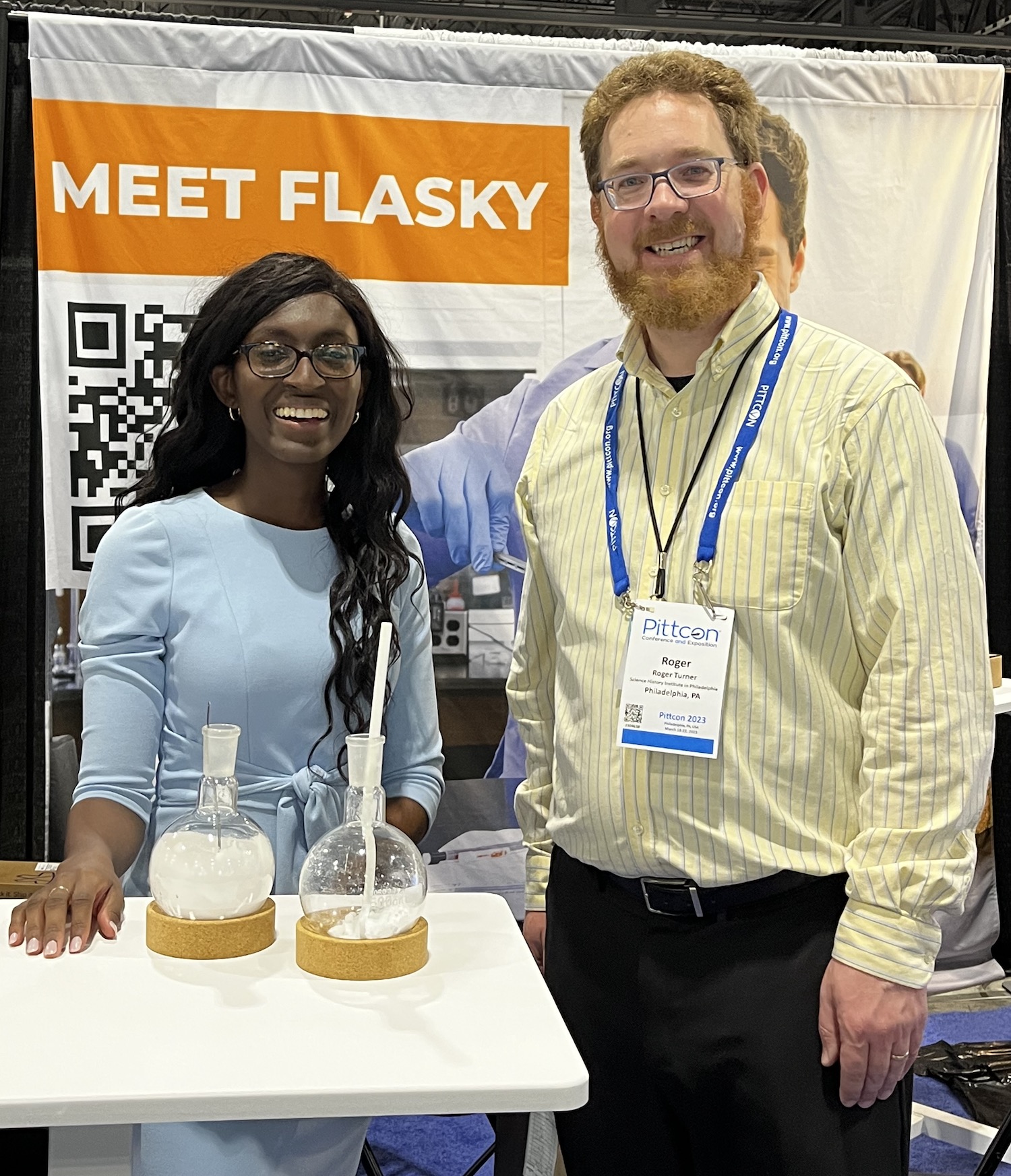
Thinking about low-tech innovation, I was excited to meet Ivanka Korankyi, the inventor of the Flasky. While working as a research chemist, she recognized how ill-suited existing tools were for retrieving solid reaction products from round bottom flasks.
So she invented a better tool for job.
The Flasky is a curved plastic hook that slides in gracefully and makes it far easier to extract virtually all of a dried compound from a round bottomed flask.
This cheap plastic tool saved her lab $60,000 a year in labor costs and productivity gains. This will be an object we will bring into our collection, helping to highlight innovation by women and people of color in science.
Ecosystems change as communities of organisms compete to capture flows of energy. You can sense a similar dynamic relationship as PITTCON has changed over time. When I attended in 2019, it seemed like every booth mentioned cannabis. Several states had recently approved marijuana for medical use or legalized it outright.
As companies brought cannabis products to market, they needed chemists for controlling quality and measuring the concentrations of active chemicals like THC. Even the federal government’s National Institute of Science and Technology was touting its work in setting standards for the emerging marijuana industry.
By 2023 “cannabis and psychedelics” had become one of six major tracks at PITTCON, alongside “energy and environment” and “pharmaceutical and biologic.” These changes illustrate the dynamic relationship between instruments, the social and economic utility of analysis, and the imperatives that drive measurement.
We can’t ask a giraffe what it feels like to live amidst the acacia trees, but at least 24 oral histories in the Institute’s collections mention PITTCON. Scientists describe it as a place to exchange ideas, be inspired, and reaffirm the social connections that drive science. But it’s also a place where you compete to capture the flows that drive the ecosystem of science.
As the instrument maker Paul Wilks put it, “Not only is PITTCON a place to meet potential customers . . . it’s also a place to check up on your competitors!”
Featured image at top: DuPont Mass Spectrometer display booth at the 1973 Pittsburgh Conference and Exposition on Analytical Chemistry and Applied Spectroscopy (PITTCON). Science History Institute.
Unwrapping the mystery of a Styrofoam Santa in our collections.
New World ingredients in Old World dyes.
How a Jewish scientist’s intellectual property became a lifeline in his journey from Nazi Europe to the United States.
Copy the above HTML to republish this content. We have formatted the material to follow our guidelines, which include our credit requirements. Please review our full list of guidelines for more information. By republishing this content, you agree to our republication requirements.